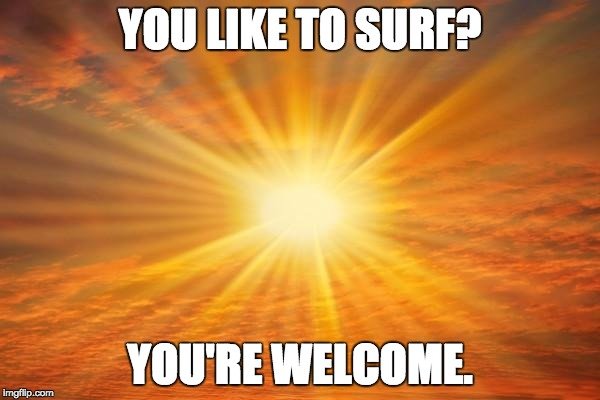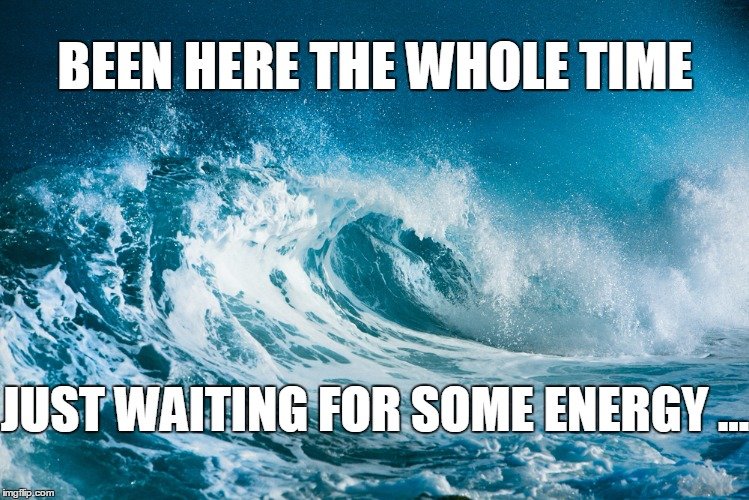Table of Contents (click to expand)
When wind blows against the surface of water, it creates small ripples as a natural result of friction. Those small ripples are magnified and they roll over one another in small circles, the water cycling down in the form of crests
While riding a huge wave in Oahu or Bundoran Beach in Ireland, great surfers probably don’t think about where waves comes from; they simply enjoy the ride and try to stay on their board. It’s actually quite easy to overlook the constant nature of waves; the dynamism of large bodies of water seems natural.
However, waves represent a fascinating series of energy transfers that constantly occur across our planet. Waves come in various shapes and sizes, are caused by a number of different things, and deserve a closer look!
The Science Of Waves
Oddly enough, the journey of a single wave on Earth actually begins roughly 93 million miles away, where our Sun kicks out solar energy and radiation in the direction of our planet. When that sunlight breaches Earth’s atmosphere, it comes in contact with air, and the first energy transfer begins.

When sunlight strikes the air molecules in Earth’s atmosphere, it causes that heated air to rise, due to its decreased density. This rising air leaves room for colder, denser air to fill in the gaps; the movement of that cold air (wind). This is how a wave is formed.
Yes, the simple explanation for where waves come from is what you might expect – that same cool breeze that might be brushing against your face as you read this. However, the manner in which wind creates waves is quite interesting.
Just as the sunlight gives its energy to the air, causing the temperature change, so too does the wind give that same energy to the water. When wind blows against the surface of water, it creates small ripples as a natural result of friction. Those small ripples are magnified and they roll over one another in small circles, the water cycling down in the form of crests.
When you are standing on a beach, it may look as though the waves are moving towards you, suggesting that large amounts of water are moved by the wind. In fact, this isn’t true; energy is passed through the water, but the water itself generally stays in the same place. This cyclical nature of waves and crests explains the regular pattern at which waves lap against the shore.

Also Read: Where Does Wind Come From?
Are All Waves The Same?
Now that we understand how waves are formed and perpetuated, it’s important to understand that not all waves are created equal. Waves are dependent on three major factors – wind speed, wind time and wind distance.
As the names imply….
Wind Speed: The speed of the wind will affect the size of the waves; the faster the wind, the larger the wave, as more of those ripples will be rumbling and cycling over one another.
Wind Time: If the wind is moving against the water for a longer time, then the waves will be larger.
Wind Distance: The amount of distance that the wind travels against the wave will also increase the wave size.
These three variables determine the strength and shape of wind-driven waves, but waves can also be caused by a few other natural factors.
Storm Surges: When severe weather strikes, it creates large areas of low pressure, which can result in intense and unpredictable winds. When this occurs over deep water, far from land, the waves can be much larger and more severe, and also much longer.
Smaller waves will combine into larger ones, which grow in intensity as they approach the shore. These can do significant damage, which is why hurricanes and tropical storms are so dangerous, not only for the wind’s effect on structures, but the wind’s effect on the waves that can smash into seaside towns with devastating results.
Tsunamis: Larger natural disturbances beneath the water, such as earthquakes or volcanic eruptions can cause massive waves that can level entire cities. When a large amount of water is suddenly displaced (perhaps because it sank into a crack on the ocean floor), the resultant wave can collect energy and race across the ocean at more than 400 mph, leaving destruction in its wake.
Rogue Waves: Although some sailors consider them little more than urban legends, there have been enough reports of rogue waves to know that they pose a real threat to the safety of sailors. Rogue waves seem to appear out of nowhere, and have been reported at times to be over 100 feet high. They often occur during storms in deep water, far from shore, and are believed to be caused by different ocean swells smashing into one another and redirecting their force in unison.
Also Read: What Causes Ripples In Water?
Are Currents Different Than Waves?
Many people have stood in a river or the ocean and felt a strong current, acting like a force pulling or pushing against the body. Those same people may assume that currents are involved in the formation of waves. While waves don’t move large amounts of water (in most cases), but merely energy, currents are the opposite.
A current is a gradual shifting of large amounts of water, typically caused by temperature differentials between Arctic waters and temperate regions. As cold, dense water sinks, warm water moves to fill the space, resulting in a conveyor-belt system, of sorts.
Water in the “global conveyor belt” takes approximately 1,000 years to complete a cycle, but this water movement has very little to do with waves. These currents tend to move beneath the waves at a consistent pace, irrespective of the wind blowing above.
How much do you know about the science of waves?

